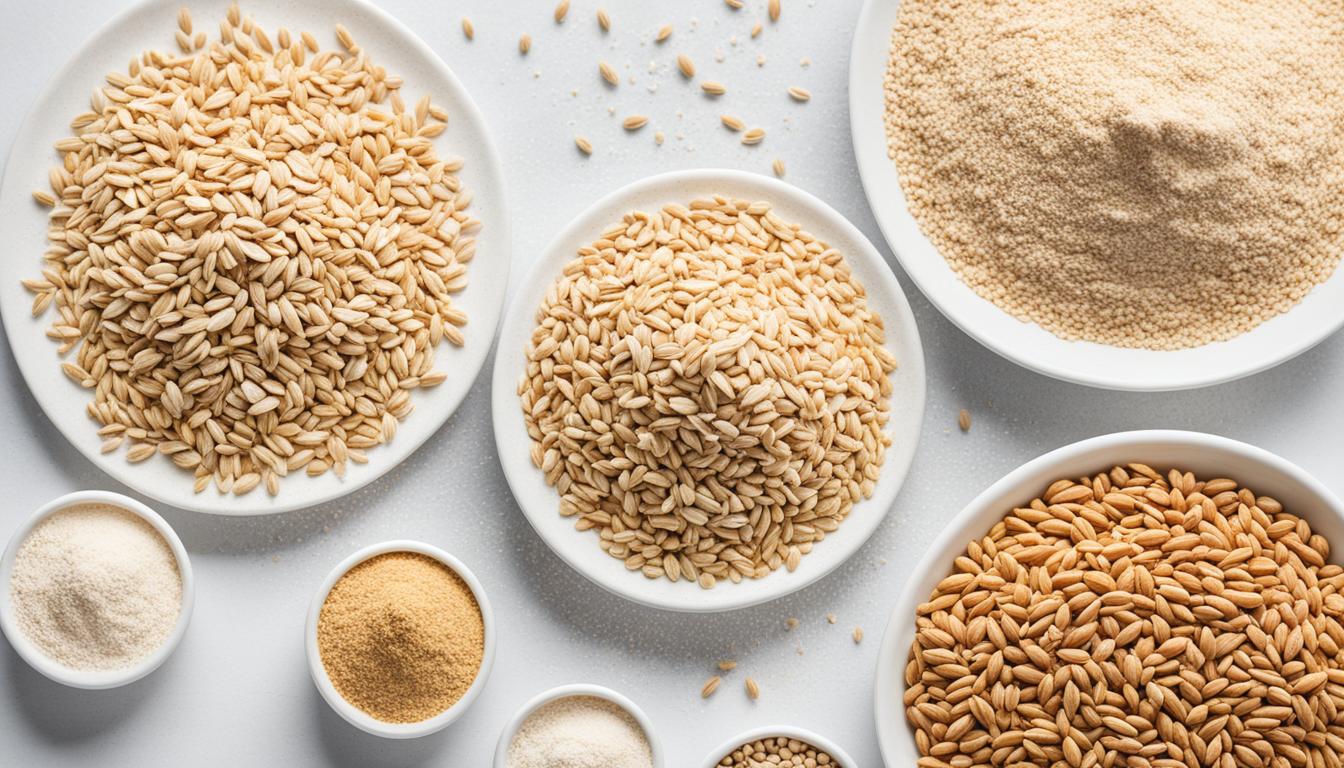Are you struggling to find a suitable substitute for whole wheat flour in your gluten-free baking? We’ve got you covered! Whether you have gluten intolerance or simply want to explore gluten-free alternatives, we have all the information you need to create flavorful and delicious baked goods without compromising on texture. Discover the world of gluten-free flours and learn how to achieve the perfect whole wheat texture without the gluten.
When it comes to gluten-free baking, the right choice of flour is crucial. In this guide, we’ll explore a variety of gluten-free flour options, including baking blends, all-purpose flours, and alternative flour choices. We’ll delve into the characteristics and uses of each substitute, so you can confidently create gluten-free treats that rival their wheat-filled counterparts. So, why settle for less when you can have the best of both worlds? Let’s dive in and discover the whole wheat gluten-free flour substitutes that will revolutionize your baking experience!
Gluten Free Flour Blends for Whole Wheat Texture
When searching for a gluten-free flour substitute that can replicate the texture and flavor of whole wheat flour, gluten-free flour blends are an excellent choice. These blends combine different starches, gums, and proteins to recreate the characteristics of gluten formation found in whole wheat flour. One standout ingredient in these blends is sorghum flour, which adds a delightful nutty element reminiscent of whole wheat flour.
By incorporating gluten-free flour blends into your baking, you can achieve a slightly coarser texture and a more open crumb, similar to what you would expect from whole wheat flour. These blends offer a versatile option for creating gluten-free baked goods that don’t compromise on taste or texture.
In addition, there are various gluten-free baking substitutes and ingredients that can further enhance the flavor and texture of your creations. Arrowroot, guar gum, and milk powder are just a few examples of ingredients that can contribute to the overall success of your gluten-free baking endeavors. Experimenting with different combinations and ratios of these ingredients allows you to find the perfect gluten-free flour mix for your recipes.
Using these gluten-free flour blends and other baking ingredients opens up a world of possibilities for creating delicious gluten-free treats that satisfy even the most discerning taste buds. Get creative in the kitchen and let your imagination lead the way as you explore the wide range of flavors and textures that can be achieved with whole wheat flour replacements and gluten-free baking substitutes.
Converting Recipes to Gluten Free with All Purpose Flour
If you’re looking to convert your favorite recipes to gluten free, using an all purpose gluten free flour is a convenient and effective option. These flours are specifically formulated to mimic the properties of wheat flour and can be used as a direct replacement in most recipes. It’s important to note that not all gluten free flours are created equal, and the success of your gluten free baking will depend on the blend of flours you choose.
Gluten free all purpose flour blends typically consist of a combination of protein flours and powdered starches to provide the necessary structure, texture, hydration, and flavor. It’s recommended to use a blend that contains gums, such as xanthan gum or guar gum, as these agents help maintain the structure of your baked goods. Additionally, when converting a wheat flour recipe to gluten free, it’s best to use an all purpose gluten free flour rather than attempting to convert a recipe calling for whole wheat or stone ground wheat flour.
By selecting the right gluten free flour options and following the proper conversion guidelines, you can enjoy delicious gluten free versions of your favorite recipes.
